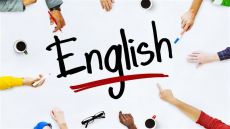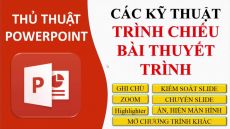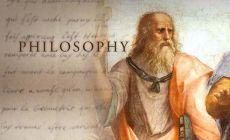Đề thi HK1 môn Tiếng Anh 7 CTST năm 2022-2023
Trường THCS Ngô Quyền
-
Identify the underlined letters that are pronounced differently from the others
Câu 1:
Identify the underlined letters that are pronounced differently from the others: climb, pick, kick, sit
A. climb
B. pick
C. kick
D. sit
-
Câu 2:
Identify the underlined letters that are pronounced differently from the others: beach, head, wear, bear
A. beach
B. head
C. wear
D. bear
-
Câu 3:
Identify the underlined letters that are pronounced differently from the others: white, kite, brilliant, kind
A. white
B. kite
C. brilliant
D. kind
-
Identify the words whose main stresses are different from the others
Câu 4:
Identify the words whose main stresses are different from the others: easy, polite, patient, careful
A. easy
B. polite
C. patient
D. careful
-
Câu 5:
Identify the words whose main stresses are different from the others: creative, terrible, exciting, comfortable
A. creative
B. terrible
C. exciting
D. comfortable
-
Câu 6:
Identify the words whose main stresses are different from the others: camera, enormous, photograph, quietly
A. camera
B. enormous
C. photograph
D. quietly
-
Order the words to complete the sentences
Câu 7:
interested/ and/ He’s/ sport/ ./ likes/ in/ football/ he/
A. He’s interested sport and he likes in football.
B. He’s interested in sport football and he likes.
C. He’s interested in and sport he likes football.
D. He’s interested in sport and he likes football.
-
Câu 8:
goes/ My sister/ basketball/ horse-riding/ ./ too/ plays/ She/.
A. My sister plays horse-riding. She goes basketball, too.
B. My sister horse-riding goes. She plays basketball, too.
C. My sister goes horse-riding. She plays basketball, too.
D. My sister goes horse-riding. She plays, too basketball.
-
Câu 9:
collect/ my friends/ things/ I/ ./ meet /also/ ./ town/ in/ I
A. I meet things in my town. I also collect my friends.
B. I collect things in my town. I also meet my friends.
C. I collect things in my friends. I also meet my town.
D. I collect in my town things. I also meet my friends.
-
Choose the best option to complete the following sentence
Câu 10:
She is ______ the beach.
A. picking up
B. lying on
C. climbing up
D. hanging from
-
Câu 11:
Were the two women talking to each other? _________ .
A. Yes, they were.
B. No, they were.
C. Yes, they was.
D. No, they wasn’t.
-
Câu 12:
There were many old cars in the _________ at the National Motor Museum.
A. motorbike
B. clothing
C. collection
D. trip
-
Câu 13:
We _________ the Pyramids last year.
A. were seeing
B. saw
C. did see
D. was seeing
-
Câu 14:
Photographing wild animals is not ______.
A. easy
B. brave
C. bad
D. quiet
-
Câu 15:
She did the exercise ________.
A. bravely
B. politely
C. rudely
D. easily
-
Câu 16:
He usually use _________ like emoticons and emojis in messages.
A. letters
B. messages
C. symbols
D. cards
-
Câu 17:
The man stayed there for two hours and _______ a football match.
A. met
B. watched
C. gave
D. looked
-
Câu 18:
Dolphins usually ________ make different sounds.
A. make
B. to make
C. are making
D. is making
-
Câu 19:
Her students _________ English at 10 a.m. yesterday.
A. was studying
B. were studying
C. studied
D. study
-
Câu 20:
The alarm clock ______ while she was sleeping.
A. ring
B. was ringing
C. rings
D. rang
-
Câu 21:
The children laugh _________ when they play with their toys.
A. happily
B. creatively
C. rudely
D. all are incorrect
-
Câu 22:
There ______ a small garden behind his house when he was a child.
A. was
B. be
C. were
D. being
-
Câu 23:
In 1500 Leonardo da Vinci _________ a flying machine.
A. wrote
B. ruled
C. invented
D. played
-
Câu 24:
The woman often ______ lunch at 12 p.m.
A. has
B. have
C. is having
D. had
-
Câu 25:
I _________ the call because the phone line is bad.
A. top up
B. hang up
C. speak up
D. turn up
-
Read the text and answer the questions
What should you do with rubbish?
I happened to see this 6-year-old girl in Chiang Mai, Thailand. She wasn’t playing with the toy. She was making it with ice-cream sticks. The toy was still simple, but it was a success for such a little girl. She still wanted to make more and more toys. While I was taking some photos of the toys, she was smiling nicely. What a clever girl!
I went to a café in Thân Văn Nhiếp Street, District 2 on a beautiful Sunday morning. The café was full when I got there. Some people were making decorations from old tyres and bottles. They were talking but they were working very hard too. Although their business was different, it was meaningful to the environment. Their start-up seemed to be a success story.
Câu 26:
What did the little girl do?
A. She played games.
B. She made some toys.
C. She sang a song.
D. All are correct.
-
Câu 27:
What does the photographer think about the toy?
A. It was beautiful.
B. It was modern.
C. It was old.
D. It was simple.
-
Câu 28:
When did the photographer went to a café?
A. Saturday morning
B. Sunday evening
C. Sunday morning
D. Saturday evening
-
Câu 29:
What were the people doing while they were making decorations?
A. They were talking.
B. They were singing.
C. They were drinking.
D. They were dancing.
-
Câu 30:
What does the photographer think about their business?
A. It seemed to be fun.
B. It seemed to be happy.
C. It seemed to be successful.
D. It seemed to be boring.
-
Rewrite the following sentences with the given beginning in such a way that the meanings stay unchanged
Câu 31:
My dad lets me stay in bed late at the weekends.
A. My dad allows me staying in bed late at the weekends.
B. My dad allows me stay in bed late at the weekends.
C. My dad allows me to stayed in bed late at the weekends.
D. My dad allows me to stay in bed late at the weekends.
-
Câu 32:
Shall we play tennis?
A. Let's to playing tennis.
B. Why don't we playing tennis?
C. How about playing tennis?
D. How about to play tennis?
-
Câu 33:
She loves being in bed late.
A. She hates being in bed late.
B. She likes being in bed late.
C. She dislikes being in bed late.
D. She like being in bed late.
-
Câu 34:
Shall we go for a bike ride?
A. Why don’t we go for a bike ride?
B. Let's go for a bike ride.
C. How about going for a bike ride?
D. All are correct
-
Câu 35:
What about going to the music concert tonight?
A. Let’s going to the music concert tonight.
B. Let’s to go to the music concert tonight.
C. Let’s go to the music concert tonight.
D. Let’s went to the music concert tonight.
-
Read the text and fill in each blank with a correct word
What Is an Emoticon? What is an Emoji?
An emoticon is a set of punctuation marks, letters, and numbers arranged to (36) ________ a human face. Each emoticon is more or less universally understood and expresses a certain emotion. (37) ________, :-D means laughing or a big grin, :-O is for surprise, and <3 is the closest you get to a heart.
Eastern and Western cultures (38) _______ completely different sets of emoticons, though. Western ones are to be read sideways, from left to right, while Eastern emoticons don't need to be rotated and can sometimes use non-Latin characters.
Emoji (from the Japanese e, “picture,” and moji, “character”) are a slightly more recent invention. Not to be confused (39) _______ the previous emoticons, emoji are pictures of faces, objects, and symbols. You’re probably familiar with the distinct style of Apple’s emoji: yellow cartoony faces with (40) _________ expressions, as well as families, buildings, animals, food objects, mathematical symbols, and more.
Câu 36:
(36) ________
A. remind
B. resemble
C. replace
D. react
-
Câu 37:
(37) ________
A. In addition
B. However
C. Therefore
D. For example
-
Câu 38:
(38) ________
A. have
B. are having
C. had
D. were having
-
Câu 39:
(39) ________
A. in
B. with
C. on
D. at
-
Câu 40:
(40) ________
A. varied
B. various
C. variety
D. vary














